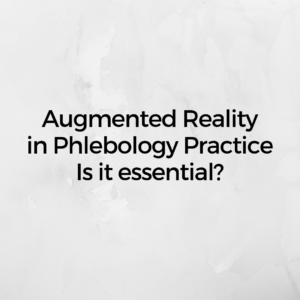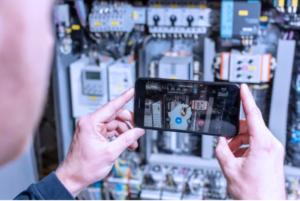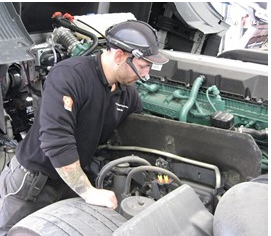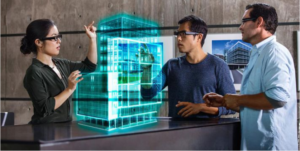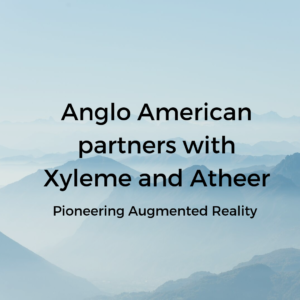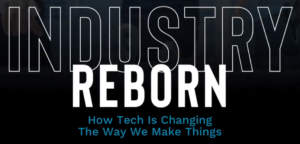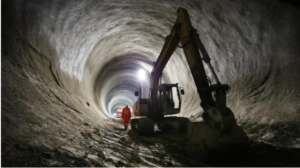In the UK, a consortium allocated £1 million—or about $1.31 million—for the development of AR in construction. Meanwhile, researchers from Virginia Tech are designing an augmented reality-based interface for wearable, powered exoskeletons that will aid workers’ performance in the industrial sector.
Yes, AR-assisted exoskeletons are coming soon, but the technology is already disrupting the architecture, engineering, and construction (AEC) industry with several use cases.
Making It Easier to Visualize Construction Projects
More and more companies are using Building Information Modeling (BIM) with augmented reality to make 3D blueprints come alive. Uploading a BIM model into their AR software and using a tablet or a pair of AR glasses would allow workers to have full-scale walkthroughs of the plan.
Companies like Daqri and Intellectsoft, for instance, are using wearable technology to render BIM models life-like. Daqri offers its flagship Smart Glasses paired with their Worksense suite of AR applications. Intellectsoft has collaborated with Microsoft to use their tech with the HoloLens.
But AEC teams don’t necessarily have to spend on special hardware to take full advantage of AR. For example, MLM Group, an engineering, environmental, and building control design consultancy, is using WakingApp to showcase their projects beyond the blueprint. The company uses the app to create 3D models of their sites in as little as 30 minutes. Clients and team members can then view the models from MLM’s mobile app and project them on top of the original blueprint.
“AR technology is providing clients with more control and understanding before the first nail is ever hammered into their construction projects,” said Matan Libis, CEO of WakingApp. “Today, AR capabilities allow consumers to fully visualize their projects so they can make sure the couch fits perfectly in the living room or the right size boiler will be included in the new apartment building. We believe that in the very near future, augmented reality will enable users to create custom features—like beds or light fixtures—that can be custom-made and included in your project.”
Allowing Construction Teams to Plan Adequately
Indeed, designers and architects can use the technology in selecting materials and organizing the layout of an area. In fact, they can even use it to guide builders through the execution of complex designs, saving time and effort in the process.
Meanwhile, when the digital model is overlaid on the actual site, workers get to see the parts of the structure as they are intended to be installed. They can see the ductwork and pipes prior to assembly to get an overview and assess units that need reinforcements or modifications. They can also take measurements with high precision, preventing costly errors.
Augmented reality also allows them to tag objects and real-world equipment with valuable information that everyone else on the team will be able to access. Workers can scan their surroundings and create 3D digital models of equipment for better collaboration.
Improving Workplace Safety
In the US, one in five construction workers suffered fatal injuries in 2017 alone. AR can potentially lower this statistic by giving contractors room for error before they actually start building.
One prototype demonstrates this by allowing workers to see the machinery and expected environment overlaid on an empty site. Such application of augmented reality will help teams prepare and check for safety hazards before work officially starts.
Later on, inspectors can survey the jobsite and compare the real-life structure against the full-scale digital model in real time. They can note any disparities that may be hazardous to worker safety.
The technology also facilitates employee training. New employees can train to use potentially dangerous equipment without the threat of an accident. Blurring the line between theory and practice, augmented reality lets workers learn how to operate machinery faster and more safely.
The Future of Augmented Reality in Construction
By 2029, the construction industry expects to have autonomous machines and Iron Man-like suits to aid workers. Augmented reality is set to be a part of this future. The technology will help builders visualize blueprints, maximize efficiency, and improve workplace safety. We’re already seeing AR in action. And with all the possibilities it brings to such a crucial industry, this tech can only keep growing.

